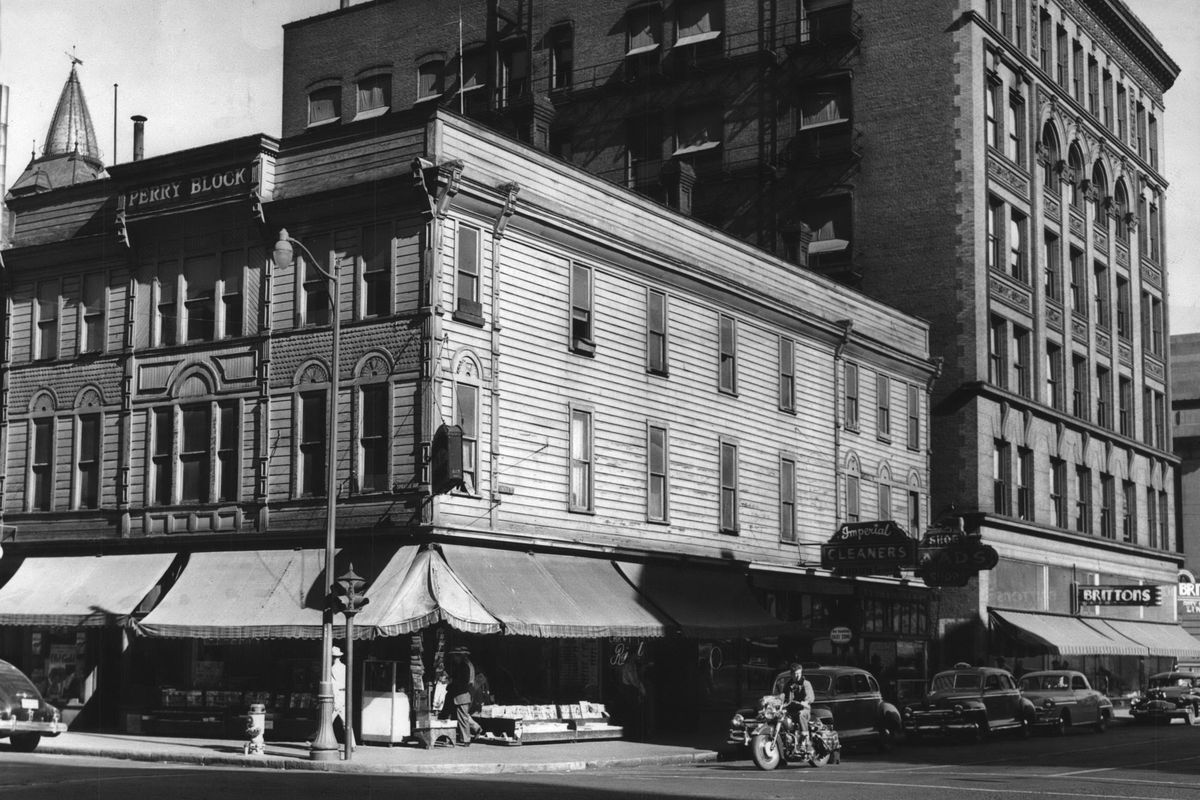Then and Now: Perry Block

It’s hard to believe that the wood-framed 1887 Perry building survived Spokane’s great fire. The raging inferno started just a couple hundred feet away at Lincoln Street and Railroad Avenue on Sunday, August 4, 1889.
The fire department, with inadequate water pressure, was powerless to stop the flames that leaped from building to building, sweeping to Washington Street on the east and the Spokane River on the north, through the downtown business district. Witnesses said that the heat radiating from burning buildings would cause the windows in the next building to melt or explode, quickly followed by the interior bursting into flame.
But the flames never moved west across Lincoln Street, sparing the three-story hotel and a few other buildings. The flames also never reached the Crescent, a new dry goods store on the north side of the block on Riverside Avenue that was preparing to open the next day. The Crescent would grow to be one of Spokane’s favorite stores for more than a century.
The Perry block, at times known as the Chamberlin Block and the Lincoln Block, offered rooms for rent upstairs and space for businesses at street level. Nance Millinery Company, Saad’s Shoe Repair and the Pigeon Cigar store were longtime tenants.
Residence hotels were important housing for workers in Spokane’s early years. By the 1940s, the rundown rooms at the Perry were in need of repair. In 1949, the building’s owner, Deaconess Hospital, hired a contractor to remove the upper two floors and place a roof over the remaining story. “We want to make the whole block presentable,” said Deaconess board chairman J. Webster Hancox at the time. “Eventually we plan to build a modern office building on the site, but that will have to wait until construction costs come down.”
The one-story Perry survived until 1976, when it was torn down to create a parking lot for the adjacent Chamberlin building.
The Perry’s survival notwithstanding, after the fire, new rules for the construction of downtown buildings evolved rapidly, with an emphasis on “fireproof” exterior materials, such as brick, building techniques and designs to prevent fire from traveling between buildings.